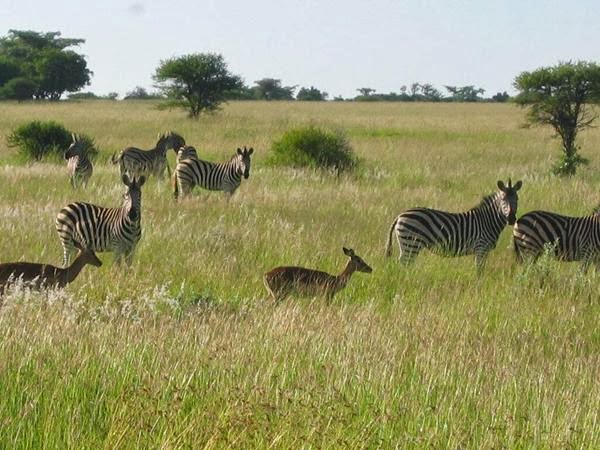Life's worth taking the rusk
23rd JUNE HAS BEEN DECLARED “INTERNATIONAL RUSK DAY” (IRD)
“There's an International Rusk day??? Ouma goodness” (@gussilber)
Yes indeed, the inaugural IRD has been proposed as a means of recognising one of South Africa’s most famous ‘foods’, the rusk - the dry, barely edible, twice-baked, misshapen biscuit-type thing that (most) South Africans rank among biltong, boerewors and Nick-Nacks as our staple foods, and after which South Africans living abroad continually hanker, especially the Ouma variety.
Why 23rd June?
Well, Penny Haw (an esteemed local writer of intriguing columns) noted that this particular day is the birth date of Ouma's sister, Anna, who said, "Bets, die biskuit is mos soe hard ek moet nou rus(k)". [Betty, the biscuit is so hard I must now rest]
Why celebrate the Rusk?
There are many reasons why this celebratory day is long over-due. Not least because of the important role that rusks played in the Boer War and continue to play in our lives, all cogently presented in the compelling article by the above-mentioned Penny (@PennyHaw), entitled “Rusks…because your dunking days are never done”. And you will finally find out why Ouma became a local food heroine.
Penny notes there are international imitations of the SA rusk: Italians, for example, have cantucci (a double-baked almond rusk-like biscuit), and “Germans have been crunching zwieback, which translates to “twice baked”, for centuries, while mandelbrot and kamishbrot are other Eastern European derivatives.” The Dutch love beschuit for breakfast but they are softer than the Ouma rusk and, I am reliably informed by an esteemed Dutch EcoAnthropologist, are used for ceremonial (e.g. to celebrate births) and other purposes.
How does one eat a rusk?
Eating such a hard food substance is not for the faint hearted or soft-gummed. One has do be fully committed to dunk. Penny explains further: “The accepted and correct way to eat a rusk is to dip it in a cup of tea or coffee. (Anyone who tells you otherwise, does not deserve to eat them.) This requires practice.”
The physics of ordinary biscuit dunking has been recently sorted out (See) but science can’t help us much when it comes to the rusk-tea/coffe dynamic interface. Rusk dunking is a meta-physical art that many have tried (and continue to try) but few have perfected.
I was at university with a chap called Duncan Rusk, who presumably had got this this dunking art down to a tea. [I wonder if his career post-university has taken a dip and whether he has perhaps ended up an old soak, but I digress.]
All this talk of food has made me hungry. So look what I (ably assisted by MrsM) made – the best seed/nut bran rusk since the Big Bang, ever!
And here’s the easy recipe (from my grass colleague,Terry). It is easier than making a galaxy or a smallish solar system but does require more ingredients and takes longer. Of course one needs grass in the form of three different kinds of bran but also lots of nuts and fruits (and go wild here). They could be classified as health rusks but they are actually edible and require no dunking, but then again, “no rusk, no gain!” (@lynnbarbour).
Terry’s Bran Rusks
Ø
1 C hi
bulk bran sticks
Ø
4 C
All Bran (I sometimes substitute 1C oats for 1 of the cups of All Bran)
Ø
2 C
Digestive Bran
Ø
1 kg SR
flour
Ø
1
Tablespoon Baking Powder
Ø
1 ½ C
caramel sugar (non-diabetics can make this 2C)
Ø
2 C
chopped pecan nuts/almonds
Ø
Seeds:
¾ C sunflower seeds; ¾ C pumpkin seeds; ¼ C linseeds
Ø
500g
Flora Lite margarine – I sometimes use half margarine, half butter
Ø
3 eggs
Ø
500 ml
low-fat buttermilk
1. Mix all dry ingredients together (sieve flour
and BP) in a very big bowl
2. Melt
margarine
3. Add
buttermilk and beaten eggs to margarine
4. Pour liquid mixture on to dry ingredients
5. Mix
well
6. Line
bottom of roasting pan with wax paper and grease
7. Spread
mixture in pan
8. Bake
at 180°C for 60 min
9. Turn
out and when cool cut into pieces
10. Dry on
mesh trays on baking trays at 100°C
overnight
11. If you
get a lot of crumbs dry those too – they make a nice cereal
12. Makes
about 100 rusks.
13. They
freeze very well.




